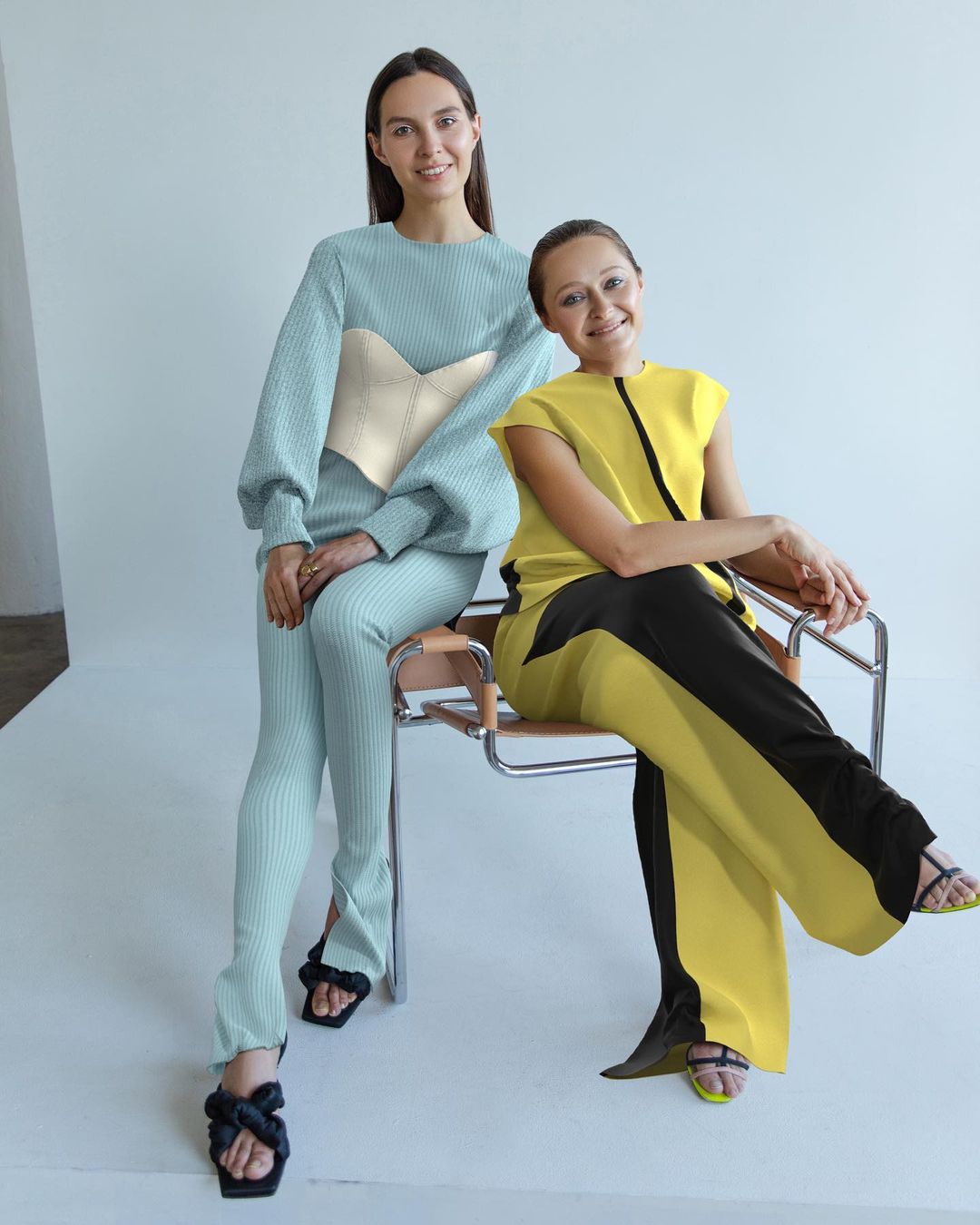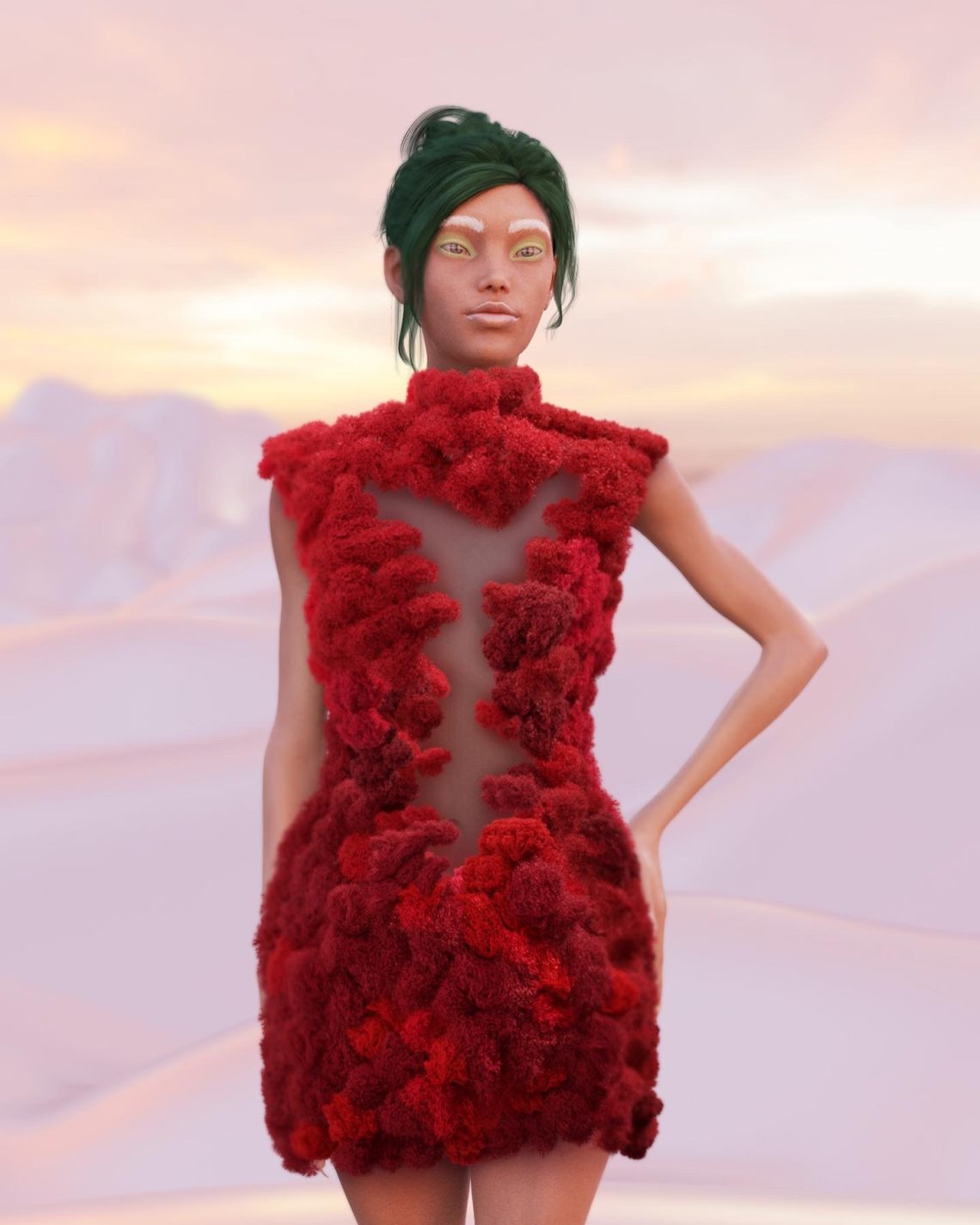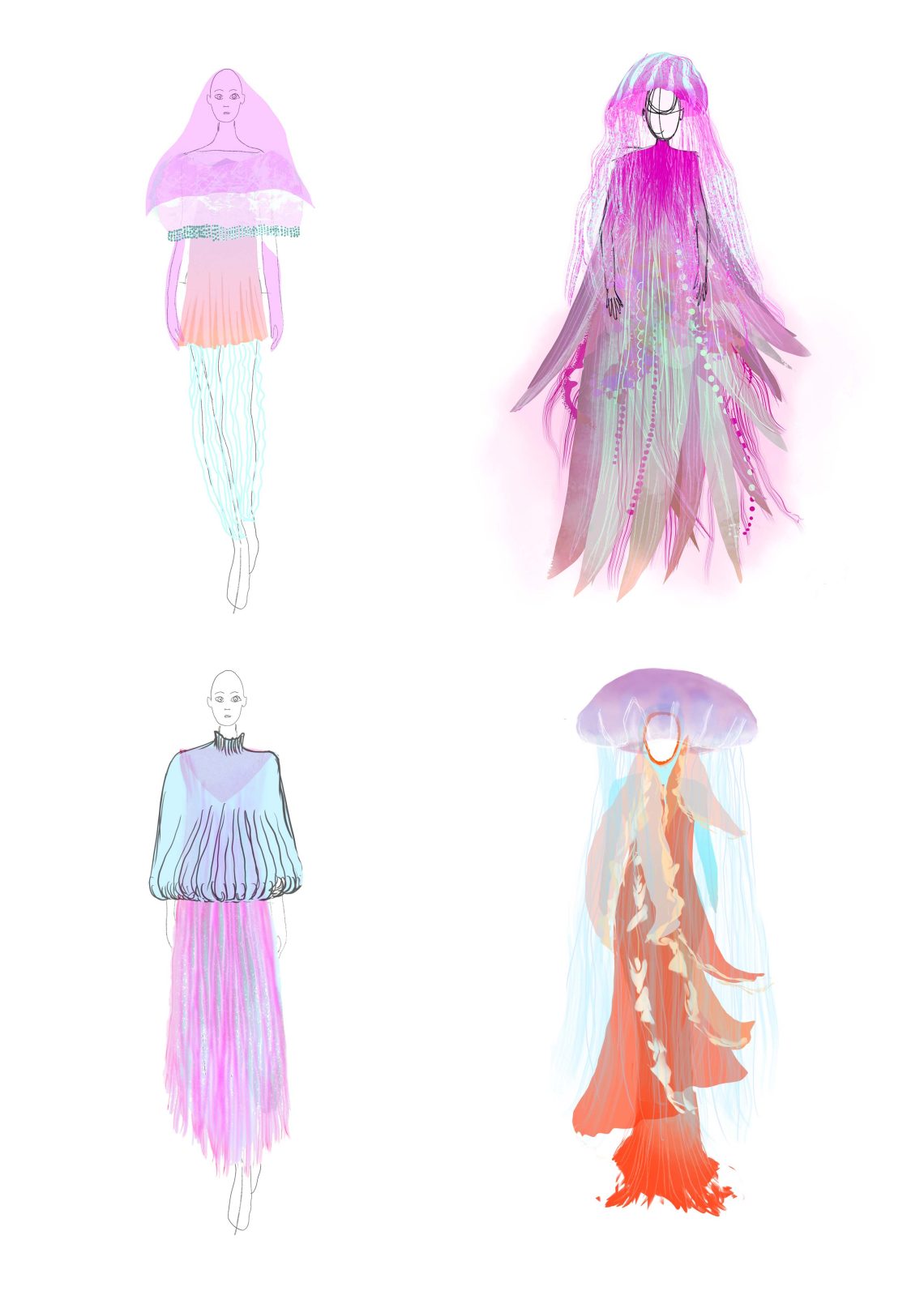Exploring the New Edges of Fashion
Shifting to a more sustainable, affordable and of course, digital future… The world is going more and more closer in a way of co-existence of physical and digital concepts. And at this nexus, there lays DRESSx; the new way of fashion, a metacloset created by Daria Shapovalova and Natalia Modenova. We held a sincere conversation with the founders of DRESSX about their venture and the trends of digital fashion.
What actually is “DRESSX” ? How did you two start working together?
Natalia Modenova: We have a vast background in the traditional fashion industry – from journalism in print, TV and online to launching and running fashion weeks and showroom with scouting, accelerating and distributing brands and their collections to the best stores in the world – that’s how we got data and feedback from the market, as we were lucky to work with the top retailers like Net-a-Porter, MatchesFashion, Revolve, Dover Street Market, Luisa Via Roma, Boon the shop, Harvey Nichols and many others bigger and smaller important stakeholders. Accelerating brands and connecting them to the press, top influencers, stylists and fashion insiders were also a big part of the activities for us. Developing strategies for the brands and executing them together is another skill we’ve got. This experience gave us a deep insight into problems that the fashion industry is experiencing and understanding the solutions that we are bringing with DRESSX.
Daria Shapovalova: We see DRESSX as a metacloset – an ultimate destination for both consumers, digital and traditional fashion brands to enter the Metaverse. DRESSX not only sells virtual clothing but also offers the whole spectrum of services, starting from digitizing physical collections or creating digital clothes from scratch, to adding another layer to fashion NFTs, allowing collectors to wear those in augmented reality through the DRESSX app.
Our big aim is to provide an endless digital closet to every person in the world for their digital presence with no boundaries to express themselves creatively. Same with the creators – 3D and fashion designers, we want to empower talents and provide them with a safe place to create and grow professionally.

You both have more than 15 years of experience in the fashion industry. What have you experienced that have led you to start a digital multi-brand store?
Daria Shapovalova: Having more than 15 years of experience in the traditional fashion industry, we’ve always been fascinated by the power of technology to reimagine the current state of things in fashion and beyond. Digital fashion was an idea that was hard to understand when we just started. In our team, however, we never doubted the concept which for us meant a significant shift to a more sustainable, affordable and digital future. Having done our research prior to the DRESSX launch, we discovered that 9% of customers in developed countries only buy new clothes to make a picture for their social media. While we genuinely share the beauty and excitement that physical fashion creates, we believe that there are ways to produce less, produce more ethically, or not produce at all.
Natalia Modenova: We have explored opportunities in AR since 2019 closely communicating with companies in Silicon Valley and launching a series of content-driven pop-up stores in Los Angeles to test our idea. Having done our research, we came to the conclusion that people enjoy creating fashion content for their social media presence and happily share it. As humanity spends more and more time on social media (more than 100 million images are uploaded daily on social media), content is becoming a strong asset, as important and valuable as our physical belongings and experiences. Since a lot of fashion items are used only for content creation (returns after taking a photo in the delivered garment are among the challenges of the growing online retail), these clothes don’t need to be produced – they can only exist in the digital space.
Digital fashion will become a new way for customers to enter the high fashion world, discovering the new way to shop luxury, reducing their environmental footprint, and experiencing the same excitement from wearing designer pieces in digital.

How did designers, brands and consumers react to DRESSX?
Daria Shapovalova: A year and 4 months ago, when digital fashion was perceived as something totally out-of-this-world, we started by introducing the use case of digitally dressing clients’ photos in 3D fashion. Now, DRESSX offers instant AR try-on on photos and videos, our metafashion appeared on the covers of the major fashion magazines, and the digital outfits we offer can also be worn on avatars in the virtual-only environment, for instance in our flagship store in Decentraland. Over the first year of the DRESSX existence, we partnered with FARFETCH, creating digital influencer campaigns for Dolce & Gabbana, Palm Angels, Balenciaga, Nanushka and later for Burberry, enabled AR try-on for the Fendi collection, featured on the cover of Haute Living – the first 100% digital fashion cover in the US, partnered with Google to support the launch of its new Google Pixel 6 phone, dressed Maye Musk for the cover of Vogue Czechoslovakia, and digitized Balenciaga and Miss Sohee couture dresses from the cover of Vogue Singapore, allowing everyone to wear the dresses in AR for free and feel like a real cover star. We’ve been very lucky to observe a truly spectacular rise of digital fashion over the last year and with more and more people, companies and major organizations getting into the space we can say that this is only the beginning.
Could you share your ideas on the emerging concept of “Metaverse”? What do you think it will evolve into?
Daria Shapovalova: Metaverse is everything. The term is mostly used for describing digital worlds, and in this manner, we can tell we at DRESSX create a digital closet for life in the Metaverse. I see Metaverse as the intersection of online worlds that coexist with the offline world and create new realities for us to live, create and develop.
Natalia Modenova: Metaverse is where we all live and interact – it’s everything we see on our black mirror screens, is what people see wearing VR sets, it’s kids hanging out in cyberpunk, attending concerts in Fortnite and buying bags in Roblox, it’s social media, it’s our daily videos calls and snaps sent to friends – and at the same time it’s our everyday life too.
Digital assets were in place in gaming for a while, but the game is actually changing and we have already become “the avatars of ourselves” in the multiple social media channels, messaging and streaming services. Digital fashion is designed to dress our digital selves, and our digital selves get more and more freedom to live and explore the Metaverse.
While we genuinely share the beauty and excitement that physical fashion creates, we believe that there are ways to produce less, produce more ethically, or not produce at all.

Can you please tell us about the trends in digital fashion? What is trendy at Metaverse?
Daria Shapovalova: While some people use digital clothing simply to experiment with their looks or enhance their pictures, others use it as an opportunity to embrace fashion they have always dreamed to wear – whether this would mean wearing brighter outfits, completely changing their style, expressing themselves through high fashion etc. Digital fashion doesn’t have any limits or predefined trends, which is why it is a great tool for exploring oneself and one’s own personality in the safest and easy way.
Natalia Modenova: With DRESSX, we aim to give equal opportunities for creators all around the globe to showcase their designs and make their creative voices heard in the industry. While we have our own vision for digital fashion with more complicated and bold 3D assets exceeding the boundaries of the physical reality, we are trying to keep a fair balance featuring different styles and aesthetics, celebrating creativity and building a diverse community of the fashion creators of the future.

Who is setting the trends in the digital world of fashion? Has the concept of influencing change?
Daria Shapovalova: We are proud to already have a really strong community of DRESSX believers and supporters, working with the pioneers in the field and having advisors spanning from the field of fashion to creative technologies. At DRESSX, we already partnered with Google, Farfetch, and H&M, created projects with Balenciaga, Fendi, Buffalo London, Miss Sohee, created an AR fashion experience for the Paris Haute Couture designer Clara Daguin, worked with Maye Musk, Helena Christensen, Sofi Tukker, Bloom Twins, Mick Jenkins, Rose Villain, Isabelle Boemeke, Megan Kaspar – the list can go on and on! Just recently we announced the founder of Rent the Runway Jennifer Fleiss and a successful entrepreneur and YouTuber with over 6M subscribers Marina Mogilko joining DRESSX as strategic advisors.
Natalia Modenova: We see more social media influencers getting into the topic of digital fashion. Some of them always used traditional fashion for the content creation, yet decided to make a switch to digital with us, while others are coming from a purely digital perspective aiming to secure a niche of digitally-native influencers, which is currently only beginning to emerge.
The digital fashion industry grows its fanbase really fast with more and more people from different backgrounds reaching out to us every day discovering the unique opportunities 3D fashion can open up for all the creatives in the field.

What would you advise to the brands that would like to pioneer a change in this newly defined reality?
Daria Shapovalova: Our main advice for the brands would be to embrace creativity in the Metaverse and remember that everything is possible in digital reality. The most unique and outstanding ideas are always welcome in the virtual realm.
Natalia Modenova: With the growing popularity of all things related to the Metaverse, the brands should act fast to be able to pioneer the digital fashion field. The best time to enter the Metaverse is right now.
Digital fashion is an opportunity to give a second life to clothes that are sometimes unsuited for being worn in our daily lives – young designers’ graduate collections, some high-fashion or couture designs.

Considering the digitalization and the undeniable need for sustainability, what do you think is next for the fashion industry?
Daria Shapovalova: The possibilities digital fashion brings for the industry are endless, making the digital fashion realm very appealing for both 3D, traditional fashion brands, design studios, foundations and more creative outlets. Digital fashion is an opportunity to give a second life to clothes that are sometimes unsuited for being worn in our daily lives – young designers’ graduate collections, some high-fashion or couture designs. While such items could be seen as too bright and expensive for our daily lives in the real world, we can look at the clothes in a completely different way in the digital space.
Natalia Modenova: The sustainability potential of digital fashion also cannot be stated enough, by substituting just 1% of physical clothing with digital garments we will save 5 trillion litres of water and eliminate the annual carbon footprint of the fashion industry by 35 million tons, which is equal to the total carbon emission of Denmark in 2017. Just imagine, all of this can be done by switching 1% of our wardrobes to digital! That’s a contribution to our planet that everyone can handle, while still keeping fashion fun and enjoying the thrill of buying new clothes and creating amazing fashion content.
We believe that in the future every fashion brand – luxury, haute couture, streetwear, everyone – will own a digital fashion line. Same as high-fashion luxury brands have perfumes or accessories. With a difference from the physical item price point yet high precision, digital fashion will become a new way for customers to enter the high fashion world, discovering the new way to shop luxury, reducing their environmental footprint, and experiencing the same excitement from wearing designer pieces in digital. NFTs will add yet another layer, providing a sense of belonging, scarcity effect and a luxury feel, which would not be otherwise achieved in the digital world.